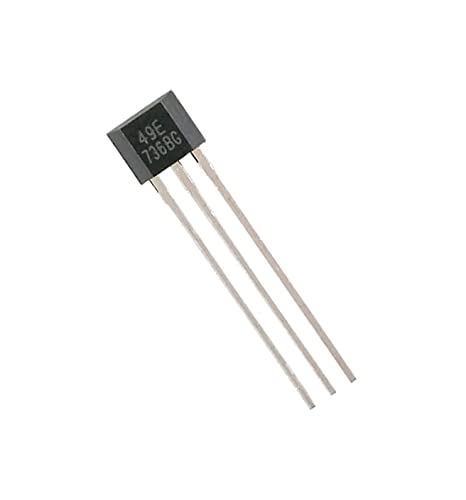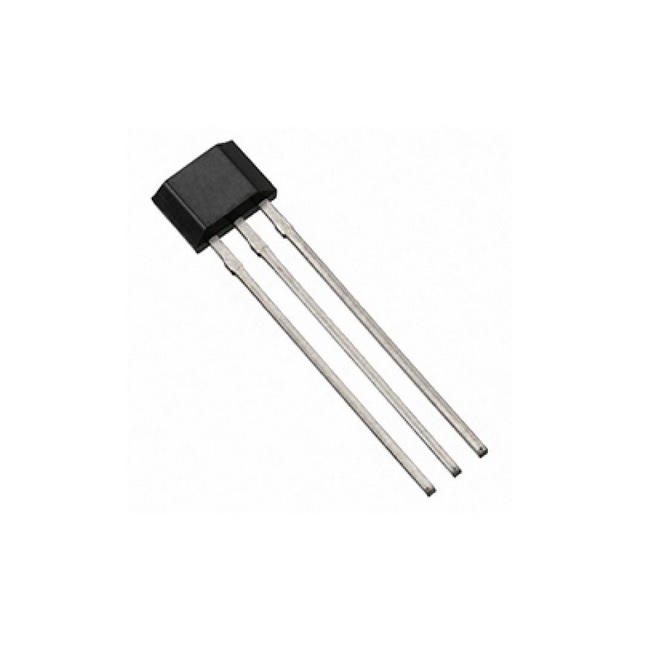Description
The SS49E is a linear hall-effect sensor. It can measure both north and south polarity of a magnetic field and the relative strength of the field.
The output pin provides an analog output representing if a magnetic field is present, how strong a present field is, and if it is a north or south polar field. If no magnetic field is present the SS49E will output a voltage around half of the source voltage. If the south pole of a magnet is placed near the labeled side of the SS49E (the side with text etched on it), then the output voltage will linearly ramp up towards the source voltage. The amount of the output voltage increase is proportional to the strength of the magnetic field applied. If the north pole of a magnet is placed near the labeled side of the SS49E then the output voltage will linearly ramp down toward the ground voltage relative to the strength of the magnetic field. For example, if you power the SS49E with 5V and there is no magnetic field present then the sensor’s output will be around 2.5V. In the same example, if you place the south pole of a strong magnet near the labeled side of the sensor, then the output voltage will go up to around 4.2V and if you placed the north pole of a strong magnet near the labeled side of the sensor, then the output voltage will drop to around 0.86V.
You can easily use the SS49E with a microcontroller (such as Arduino) or single board computer (SBC). Just provide power to the GND and VCC pins of the SS49E and connect its output pin to an analog input on your microcontroller or SBC, which you can then measure the analog voltage of to calculate the sensor’s measured data.





Reviews
There are no reviews yet.